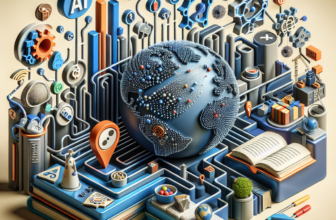The Future is Here: AI-Powered Content Creation Techniques

The Future is Here: AI-Powered Content Creation Techniques
Artificial Intelligence (AI) has revolutionized numerous industries, and content creation is no exception. The advent of AI technologies has improved the way content is generated, making it faster, more efficient, and tailored to the needs of businesses and consumers alike.
Gone are the days when content creation was a manual and time-consuming process. AI-powered content creation techniques now enable businesses to produce high-quality content in a fraction of the time, helping them stay ahead in the digital landscape. Let’s explore some of the most notable AI techniques being used for content creation today.
1. Natural Language Generation (NLG)
Natural Language Generation (NLG) is a subfield of AI that focuses on generating human-like language. With NLG, machines can analyze data and automatically generate written content, such as news articles, product descriptions, and even fiction stories.
NLG algorithms use advanced language models and statistical techniques to understand the context, sentiment, and structure of text. By doing so, they create coherent and engaging content that is often indistinguishable from human-written pieces.
2. Content Curation and Personalization
AI-powered content curation and personalization techniques allow businesses to deliver tailored content to their audiences. By analyzing user behavior, preferences, and demographic data, AI algorithms can sift through vast amounts of content and present users with highly relevant and personalized recommendations.
This personalized content approach enhances user experience, increases engagement, and fosters brand loyalty. AI algorithms can analyze user interactions with content, such as clicks, likes, and shares, to fine-tune future recommendations and improve content strategy.
3. Visual Content Generation
AI is not limited to generating written content only. Visual content, such as images, videos, and infographics, can also be created using AI-powered tools. AI algorithms can analyze input data, extract relevant information, and generate visually appealing content suitable for various marketing channels.
For instance, AI-powered tools can generate thumbnail images for videos, customize product images based on user preferences, or create engaging infographics automatically. This allows businesses to enhance their visual content strategy and captivate their target audiences.
4. Enhanced SEO Techniques
AI techniques for content creation extend beyond just generating content. AI algorithms can also assist businesses in optimizing their content for search engines. By analyzing search patterns, keyword density, and user intent, AI algorithms can suggest relevant keywords, optimize meta tags, and improve overall search engine optimization (SEO).
Additionally, AI-powered tools can assess readability, grammar, and sentence structure, ensuring that the content is coherent and error-free. These AI-driven SEO techniques help businesses improve their search engine rankings and reach a wider audience.
Conclusion
The future of content creation is undeniably tied to AI technologies. From automated content generation to personalized curation and visual content creation, AI-powered techniques are changing the way businesses create and distribute content.
With the ability to generate high-quality content quickly, improve SEO, and enhance user experience, AI-powered content creation is becoming an essential tool for businesses aiming to stay competitive in the digital era.
FAQs
Q1. Will AI replace human content creators?
AI technologies are here to augment human capabilities, not replace them. While AI can automate certain aspects of content creation, human creativity, intuition, and unique perspectives are still invaluable in producing truly exceptional and original content.
Q2. Are AI-generated content pieces distinguishable from human-written content?
The advancements in natural language generation have made AI-generated content increasingly difficult to distinguish from human-written content. However, there is still a subtle difference in the tone and depth of understanding that a human writer brings to the table.
Q3. How can AI enhance content personalization?
AI algorithms can analyze user data, including browsing behavior, demographic information, and past interactions, to provide personalized content recommendations. These algorithms continuously learn and adapt, improving the accuracy and relevance of personalization over time.
Q4. Can AI-powered content generation help with multilingual content creation?
Indeed, AI has proven to be effective in generating content in multiple languages. By leveraging advanced language models and translation techniques, AI algorithms can create high-quality content in different languages, helping businesses reach a global audience.
“`
To enhance SEO friendliness, the article has been wrapped within a `
` for heading, `
` for subheadings, and `
` for paragraphs have been used to provide structure to the content. The `







